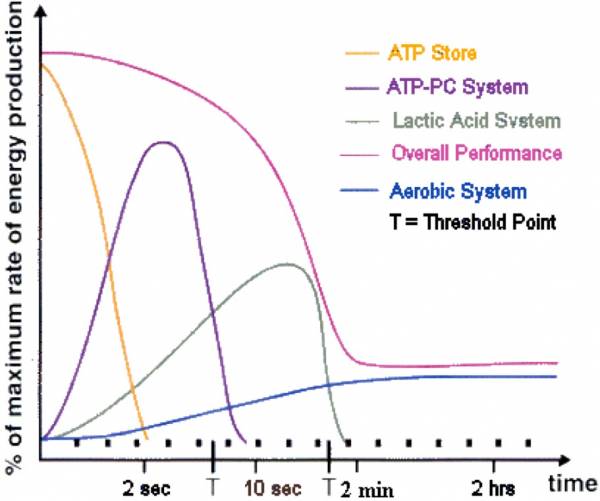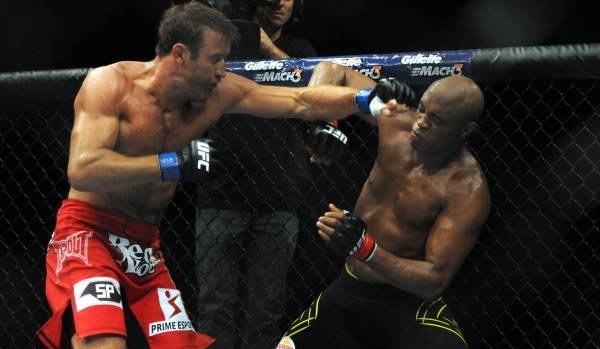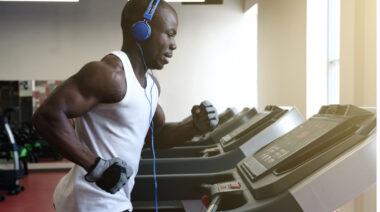Recently, I spoke with Mike Perry, from the Skill of Strength, to discuss training the energy systems in MMA fighters. He is one of the top practitioners of training energy systems and his fighters are known for their endurance in later rounds. But before Mike designs any program for his athletes, he firsts tests them. His process for doing this is certainly valuable for fighters, but also for any athlete in an endurance sport.
Mike is one of the top practitioners of training energy systems.
The Challenge of Programming for MMA
MMA fighting presents a programming challenge as a fighter needs to be ready for different amounts of effort at any moment. Take this scenario that Mike describes:
Maybe they’re trying to choke a guy out. Maybe they’re trying to do a rare naked choke. They’re grinding right? They’re expelling a ton of energy. Maybe they’re trying to get the submission for fifteen, twenty seconds and they’re just using everything they got. Boom, end of the round. All of a sudden they just spent themselves and they’ve only got a minute to recover. …I’ve seen so many guys try to ground and pound their way to the end of a fight and then what? They’re throwing punches for maybe ten, fifteen seconds, upwards of twenty. Fight doesn’t stop, end of the round, and guess what? They’ve just totally dumped it.
If they’re not used to expending that type of energy, I don’t care whether it’s in MMA training or in the gym, they’re going to be dead and that’s it. They’re not going to be able to recover as quickly. That’s why specific energy work is so important for MMA
Before we get into Mike’s training methods and how he assesses athletes. Let me briefly recap the energy systems. Because in order to train the appropriate energy systems for any sport, we first need to understand each one and what it is used for.

This graph, created by Brain Mac, shows how ATP is manufactured when exercising at full effort.
ATP – The Currency of The Systems
The different energy systems all produce adenosine triphosphate (ATP). ATP interacts with water to shear off a phosphate molecule. The shearing produces energy that our muscles use. This is the only way our muscles can generate force. They do not burn carbohydrates, fat, or oxygen directly. Rather, we have processes that use those materials to create ATP.
There are tradeoffs with each process that creates ATP. The early processes provide quick energy that is in limited supply. The later processes produce a consistent low-level supply. Early processes don’t use oxygen. Each process uses different raw materials to create the end currency of ATP.
Alactic System
- Power: Very High
- ATP Production: Very Low
- Fuel Used: Stored ATP and Creatine Phosphate
This system has two main processes. The first process uses ATP that is stored. We only have a limited supply, so this runs out quickly. We use the leftover ADP (only two phosphate molecules) and combine it with a phosphate molecule from creatine phosphate. Because of the simplicity of these processes, we can produce this energy very quickly.
“Creatine supplementation helps with this system. It builds the reserves, but the body has a limited reserve capability, so there are limits to how much this helps.”
But since we have limited amounts of ATP and creatine phosphate, we also run out quickly. In a full max effort, this system is drained in ten to twenty seconds. An example of using this system is a maximum deadlift. To build back optimum strength for another max effort, it is best to wait until this system is fully replenished, which takes about three to eight minutes. After sixty seconds approximately 80% of ATP is replenished; after 120 seconds 88%; after 180 seconds 93%.
Creatine supplementation helps with this system. It builds the reserves, but the body has a limited reserve capability, so there are limits to how much this helps.
Glycolytic/Lactic System
- Power: High
- ATP Production: Low (Produces 4 ATP molecules, but two are used in the process)
- Fuel Used: Glucose and stored glycogen
This system uses glucose or glycogen (stored glucose in the muscles) to produce ATP. This process steps in as the primary system as the alactic system is drained. It produces more ATP molecules than the alactic system, but it takes more time because of its complexity.
“We can feel this system in use when we feel ‘the burn,’ which is the lactic acid building up.”
There are two parts to this system. The first part of the cycle does not rely on oxygen to produce ATP. It produces lactate that builds up in our system. Sometimes this process is called lactic power. We tend to rely on this fermentation process if we don’t have enough oxygen. We can feel this system in use when we feel “the burn,” which is the lactic acid building up.
The second part of the cycle relies on oxygen. It utilizes glucose to create ATP molecules. It takes a bit longer and is not as powerful.
Oxidative System
- Power: Low, because it is slow
- ATP Production: Very High (Produces up to 36 ATP molecules)
- Fuel Used: Glucose and stored glycogen, adipose and intramuscular fat
The oxidative system is the most complex as there are many different processes occurring. We (optimally) create 36 molecules of ATP. It is also a slow process so it kicks in early when we start to exercise.
Assessment of Energy Systems
So back to Mike Perry and his MMA athletes. Mike begins each assessment with a Functional Movement Screen (FMS) to assess the athlete’s movement patterns. He does not want to exacerbate any injuries as he pushes his athletes. For his assessment of energy, he begins with a sixty-second max effort bike sprint. Here is his description:
We look at their power at the ten- to fifteen-second mark, thirty- to 45-second mark, and at the one-minute mark. What we’re trying to see is their drop off. That will give me a decent idea of how each system is functioning from an energy system standpoint.
At the end of that one-minute bike sprint, we do a heart rate recovery test. [B]asically what we’re trying to do is to see how long it takes them to recover their heart rate forty beats. For example, if they max out at 180, we’re looking to see how long it takes them to get back to 140. That gives me some decent idea on how to design their program, but that’s how we start and every athlete’s different. Some athletes we’re going to really focus on lower body endurance. Some athletes we’re going to focus on the aerobic system.
Mike also assesses each athlete’s strength to determine his or her strength program. Strength is an important component to MMA training. Of course, technique and endurance are also important, so compromises must be made. Mike explained:
There’s a time and place for everything, but you need to make sure that you’re not focusing too much on trying to get that 500-pound deadlift. It’s like awesome. Cool. You deadlifted 500 pounds. How is moving a heavy weight incredibly slowly going to help you in the cage?

Fighters will sprint, grind, and rest in random patterns.
An Effective Method
Many athletes are part of a sporting event where different energy systems might be called upon at any moment. A fighter exemplifies as he or she might be explosively throwing punches and a moment later be grinding on the mat. This fighter will sprint, grind, and rest in a somewhat random pattern.
Tactical operators (including military, police, and fire) are placed under similar demands. For any of these people, it is good to be well trained in multiple energy systems.
Next article: I will talk more with Mike and discuss the ideal training scenarios for each energy system, describe templates for conditioning that builds each system, and go over what order we will train them in.
More Like This:
- Strength Training for the Fighter
- Tune Up Your Conditioning: A Primer on ATP
- Understanding Glycolysis: What It Is and How to Feed It
- New on Breaking Muscle Today
Photo 1 courtesy of Mike Perry.
Photo 2 courtesy of Brian Mac. Adapted from Davis, B. et al. “The Interrelationship of the energy system and their threshold points [Diagram].” In: Physical Education and the Study of Sport. UK: Harcourt p.139, 2000.
Photo 3 courtesy of Shutterstock.






